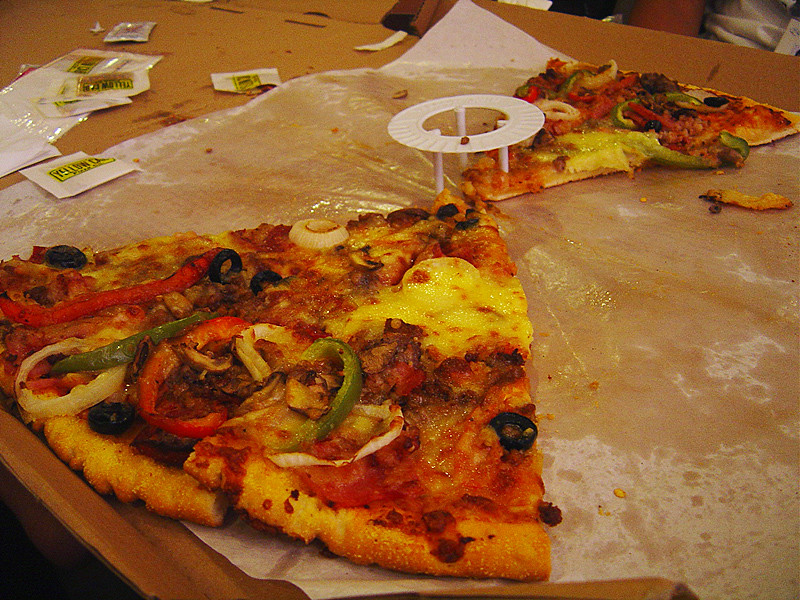科學家長期以來熟知全氟化合物(PFCs)對健康的威脅,但美國最新的全國性研究顯示,尚有多家速食連鎖業者仍然使用含PFCs的食物包裝紙、包裝袋、包裝盒,因為PFCs具有防油效果。
研究抽測全美27家速食連鎖店和地方餐館,其中不乏知名連鎖業者麥當勞、肯德基、星巴克,發現2014年到2015年間搜集的三明治和點心包裝袋、薯條紙袋、披薩盒、炸雞桶等包裝紙類,327個樣品中有40%檢出氟。
速食防油紙袋含PFCs 消費者吃下肚
PFCs是無黏性、防水、防污的化學物質,1950年代起開始廣泛使用於消費性和工業產品。美國環境工作小組(Environmental Working Group,EWG)資深科學家安德魯斯(Dave Andrews)和沃克(Bill Walker)指出,「PFC塗料常用於食物包裝,防止油質滲透。但高溫高油的速食食品往往會吸附PFC,讓消費者吃下肚。」
EWG和其他非營利研究組織、聯邦與州級監管機關、學校的科學家合作,抽測全美五個區域27家速食連鎖業和地方餐館的三明治和點心包裝袋、薯條紙袋、披薩盒和其他包裝紙類的PFC含量,並將研究(Fluorinated Compounds in U.S. Fast Food Packaging)發表於《環境科學與科技通訊》期刊。
研究人員發現,2014年到2015年間搜集的327個樣品,有40%檢出氟。檢出氟不代表一定有PFC,但是研究團隊中來自美國環保署的專家進一步檢驗少數樣品後發現,大部分他測試的樣品均含有PFC。
| 速食店家 | 樣本數(註) | 檢出氟比例(%) |
| 漢堡王(Burger King) | 37 | 27% |
| 美式甜甜圈品牌DUNKIN'DONUTS | 12 | 33% |
| 肯德基(KFC) | 20 | 25% |
| 麥當勞(McDonald's) | 31 | 19% |
| 必勝客(Pizza Hut) | 3 | 33% |
| 星巴克(Starbucks) | 21 | 76% |
| 賽百味(Subway) | 19 | 42% |
| 溫蒂漢堡(Wendy's) | 31 | 23% |
| 附註:樣本為2014-2015年間,蒐集於美國波士頓、洛杉磯、西雅圖、華盛頓特區、密西根大急流城的速食連鎖店,包含三明治、墨西哥捲餅、披薩盒、炸雞桶,以及其他直接以紙類盛裝的品項。 資料來源:EWG;製圖:環境資訊中心 | ||
幾乎所有美國人的血液都含PFCs
部分人體研究發現,某些PFCs可能影響發育中胚胎和兒童,包括其成長、學習和行為。根據美國毒物暨疾病登記署(ATSDR)資料,PFCs可能減少生育能力、影響人體荷爾蒙、增加膽固醇、影響免疫系統和增加癌症風險。
安德魯斯和沃克說,PFCs可以長期存在環境中,並會在人體與野生動物體內累積。疾病管制暨預防中心(CDC)發現,幾乎所有美國人的血液裡都含有PFCs,而且2005年EWG委託的研究顯示,PFCs會透過臍帶和母乳母傳子。
EWG呼籲速食業者停止使用PFC或其他氟化化合物於可能直接接觸食物的包裝紙。
新一代PFC塗料隱藏未知風險
美國食藥署核准20種新一代PFC塗料用於食物包裝紙。但是EWG認為,這些化學物質並未經嚴謹的安全性測試,而且《商業機密保護法》有時會讓企業不必公開揭露特定化學物質的存在,甚至不必送交主管機關核准。
在杜邦公司送交美國環保署的文件中,甚至明確指出一種叫做「GenX」的新一代食物包裝紙塗料,可能具有「顯著健康損害風險」,包括胰腺和睾丸中的癌性腫瘤、肝臟損害、腎臟疾病和生殖功能損害。
我國食藥署網站則稱,目前國際間對全氟烷化合物(PFCs)的人體健康風險評估,以及管理標準均「尚處於研究階段」。整體而言,民眾對防油紙袋之安全性無需過於擔憂。
The health hazards of perfluorinated chemicals, or PFCs, are well known to scientists, yet some fast food chains still use food wrappers, bags and boxes coated with these grease-resistant compounds, according to nationwide tests reported in a new peer-reviewed study.
“Fluorinated Compounds in U.S. Fast Food Packaging,” is published in the current issue or the journal “Environmental Science and Technology Letters.”
PFCs are nonstick, waterproof, stain-resistant chemicals that companies have used since the 1950s in consumer products and industrial applications.
“PFC-based coatings are applied to food wrappers, bags and boxes to stop grease from dripping through. But the hot, often fatty foods served in those papers pick up the chemicals, and when the food is consumed, so are the chemicals,” write Environmental Working Group, EWG, senior scientist Dave Andrews and Bill Walker, managing editor of the EWG blog, describing the testing conducted for the study.
Scientists from nonprofit research organizations including EWG, federal and state regulatory agencies and universities collaborated to test samples of sandwich and pastry wrappers, french fry bags, pizza boxes, and other paper and paperboard from 27 fast food chains and local restaurants in five regions of the United States.
They found that of the 327 samples used to serve food, collected in 2014 and 2015, 40 percent tested positive for fluorine.
See the entire chart here.
The presence of fluorine does not automatically indicate the presence of PFCs, write Andrews and Walker. But one of the study authors is a U.S. Environmental Protection Agency expert who, in further tests of a smaller number of samples, found that the majority of materials he tested contained known PFCs, they explain.
Some, but not all studies in humans have shown that certain perfluroinated chemicals may affect the developing fetus and child, including possible changes in growth, learning, and behavior. They may decrease fertility and interfere with the body’s natural hormones, increase cholesterol, affect the immune system and increase cancer risk, according to the U.S. Agency for Toxic Substances.
PFCs are persistent in the environment and have built up in the bodies of people and wildlife worldwide. The Centers for Disease Control and Prevention have found PFCs in the blood of virtually all Americans, and in 2005, tests commissioned by EWG were the first to show they are passed from mother to child through the umbilical cord and breast milk, Andrews and Walker explain.
The U.S. Food and Drug Administration has approved 20 next-generation PFCs for coating paper and paperboard used to serve food.
But EWG argues that these chemicals have not been adequately tested for safety, and trade secrecy laws mean that, in some cases, the limited safety data submitted to the EPA does not publicly disclose the identity of the specific chemicals or even the companies submitting them for approval.
In documents filed with the EPA, DuPont reported that a next-generation chemical used to produce food contact paper, called GenX, could pose a “substantial risk of injury,” including cancerous tumors in the pancreas and testicles, liver damage, kidney disease and reproductive harm, they write.
EWG is advising that fast food companies stop using PFCs or other fluorinated compounds in wrappers, containers and pizza boxes or wherever they might come into contact with food.
※ 全文及圖片詳見:ENS





